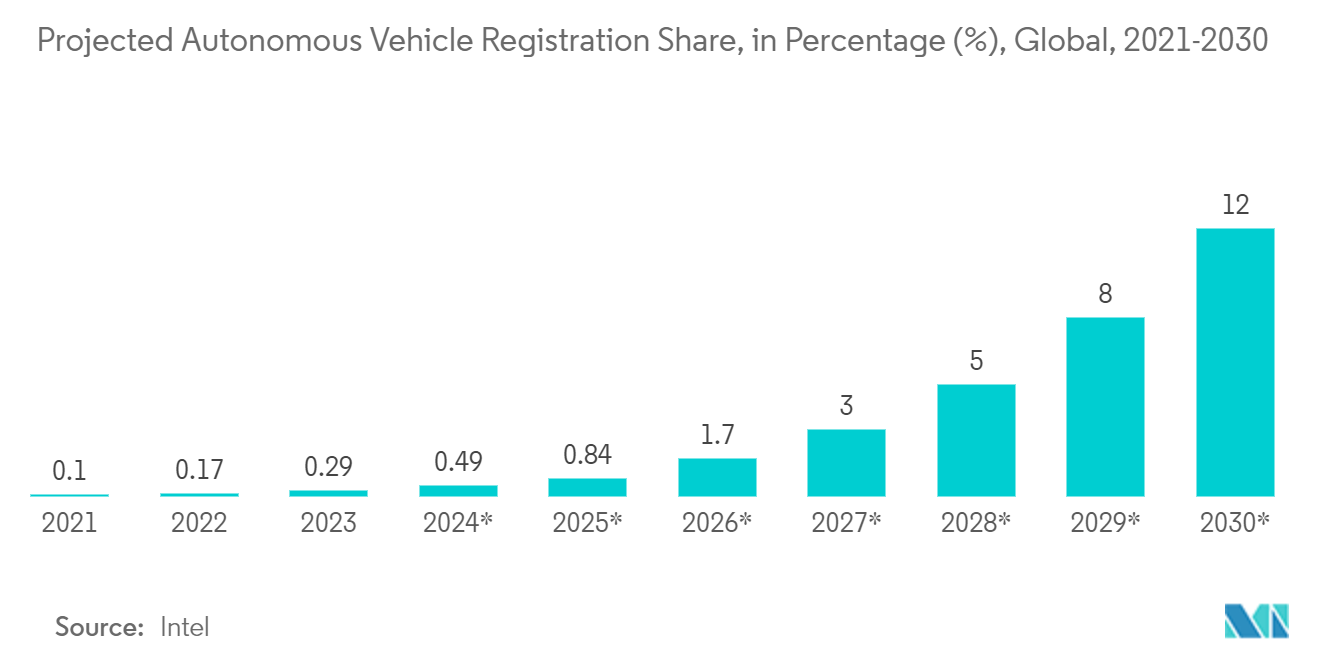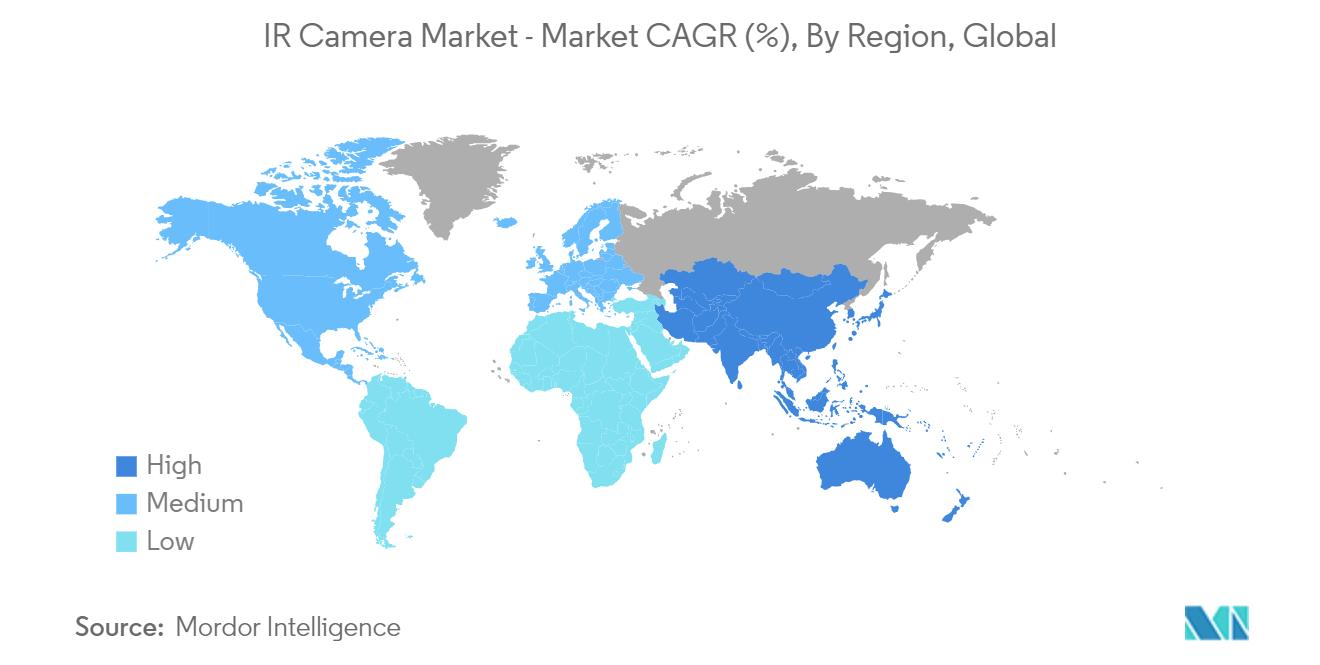Market Trends of IR Camera Industry
Automotive Industry to be the Fastest Growing End User
- The automotive industry's demand for infrared cameras is rising, driven by the growing adoption of advanced driver-assistant systems (ADAS). Governments worldwide are also promoting ADAS deployment.
- For example, the Federal Automated Vehicles Policy, issued by the National Highway Traffic Safety Administration (NHTSA) of the US Department of Transportation, encompasses a spectrum of vehicles, from those equipped with advanced driver-assistance systems to entirely autonomous vehicles.
- In the automotive sector, IR cameras can detect heat signatures, enhancing vision in low-light conditions and adverse weather. IR cameras are also utilized for night vision systems and driver monitoring systems. They also play a crucial role in advanced driver assistance systems (ADAS), providing accurate distance and object detection and enabling features like adaptive cruise control and automatic emergency braking.
- The growing popularity of autonomous or self-driving vehicles also contributes to the market's growth. For instance, Intel predicts that global car sales will hit 101.4 million units by 2030, and autonomous vehicles are projected to represent approximately 12% of all car registrations that year.
- The market for dashboards and parking cameras is also experiencing a recent surge in demand. The automotive industry's adoption of infrared cameras has been driven by the increasing use of dashboard cameras, particularly in high-end and luxury vehicles, for security purposes.

Asia Pacific Expected to Register Major Growth
- The Asia-Pacific region is witnessing a surge in investments in automation and Industry 4.0 technologies. The demand for robust inspection and observation systems, coupled with a high pace of product innovation, is propelling the growth of IR camera systems. Industries such as manufacturing, oil and gas, and utilities extensively utilize infrared cameras for non-contact temperature measurement, condition monitoring, and predictive maintenance. These cameras enable early detection of equipment failures, hotspot identification, and energy efficiency assessments.
- China has witnessed a surge in demand for IR cameras, particularly for observation tasks like investigation, remote surveillance, border control, and safeguarding critical infrastructure. The need for powerful infrared and thermal zoom cameras is on the rise. China's application of infrared cameras is expanding beyond security. They are increasingly being deployed for water pollution control, ecological monitoring, and mineral resource surveys.
- According to the National Crime Records Bureau, crime rates in India have been on the rise. This has prompted security agencies nationwide to advocate for the installation of imaging cameras, including infrared (IR) cameras, to enhance household safety.
- Furthermore, the Indian automotive sector, as per the India Brand Equity Foundation (IBEF), has been witnessing a steady annual growth rate of 9.5%. With the increasing recognition of IR camera technology in automobiles, the market for these cameras in India is poised for further expansion.
- Japan's rising demand for IR cameras is driven by advancements in defense, military, surveillance, and healthcare applications. Notably, Japan's defense budget for fiscal year 2024 is estimated at JPY 7.95 trillion (USD 0.052 trillion), a significant increase from previous years, reflecting the government's focus on bolstering national defense.


